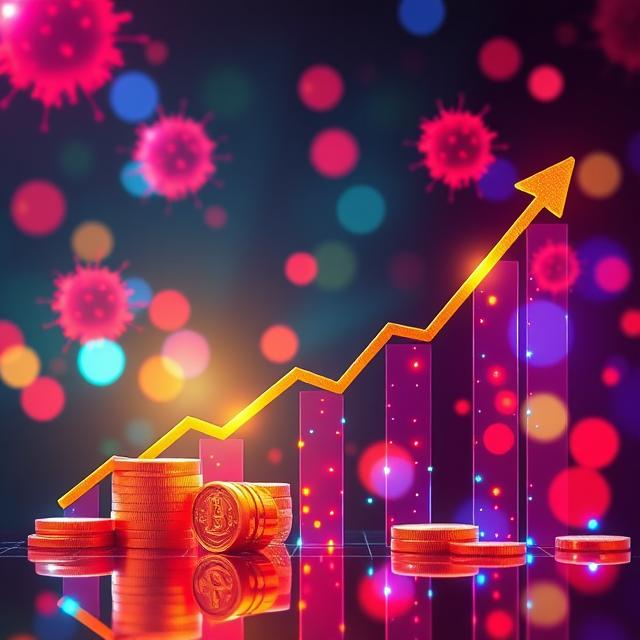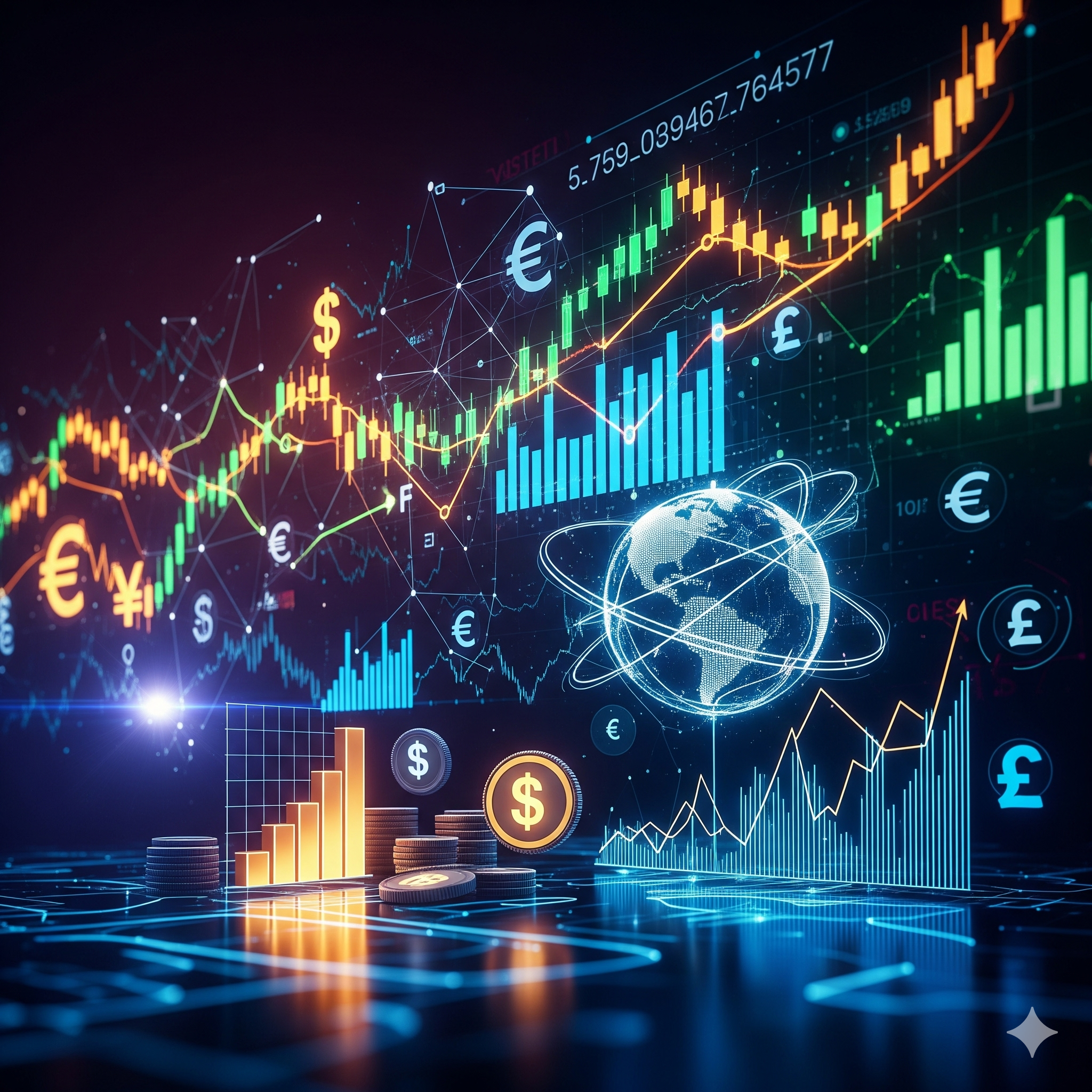Introduction
The COVID-19 pandemic posed an unprecedented challenge to global economies, and India was no exception. As the world grappled with the crisis, India’s economy witnessed a historic downturn in 2020. However, in the wake of these hardships, the country embarked on a road to recovery, with various measures taken by the government to bolster the economy. This article will analyze the trends in India’s GDP growth post-COVID-19, examine the steps taken by the government for economic recovery, and explore the challenges and prospects in the coming years.
I. Trends in GDP Growth of India Post-COVID-19
1. FY 2020-21: Contraction and Setbacks
The fiscal year 2020-21 was marked by an extraordinary economic contraction in India. The country’s GDP shrank by 7.3%, the worst decline since India’s independence. The sharp contraction was primarily driven by the nationwide lockdown imposed to curb the spread of the virus, which halted economic activity across the country. Various sectors such as manufacturing, tourism, hospitality, and retail were severely impacted, leading to massive job losses and economic distress.
India’s consumption-driven economy saw a sharp decline, as lockdown measures restricted mobility and consumer spending. The service sector, accounting for over 50% of the country’s GDP, took the brunt of the pandemic’s economic fallout, with businesses in the hospitality, retail, and aviation industries being among the hardest hit.
2. FY 2021-22: Recovery and Rebound
After the severe contraction of FY 2020-21, India experienced a remarkable recovery in FY 2021-22. The GDP growth rebounded to 8.7%, significantly surpassing the earlier projections. This recovery was primarily driven by the government’s stimulus measures, the acceleration of vaccination drives, and the reopening of the economy.
Key sectors such as manufacturing, construction, and agriculture played a critical role in this recovery phase. India’s agricultural sector, in particular, demonstrated resilience despite the challenges posed by the pandemic. Record food grain production, along with government procurement programs, provided much-needed stability to the rural economy. Similarly, the manufacturing sector experienced a sharp upturn due to strong domestic demand, the implementation of the Production-Linked Incentive (PLI) schemes, and the government’s focus on self-reliance.
However, the recovery was uneven, with urban unemployment rates remaining high and sectors like tourism and aviation still struggling to regain their pre-pandemic growth levels.
3. FY 2022-23: Stabilization and Growth at a Slower Pace
As the economy continued to recover, growth began to stabilize in FY 2022-23. The projected GDP growth rate for the year was 6.5%, reflecting a return to more sustainable levels of growth after the rapid rebound seen in the previous year. While some sectors showed sustained growth, particularly in digital services, pharmaceuticals, and IT, others, including construction and real estate, faced challenges due to rising raw material prices and labor shortages.
India’s exports continued to perform well, with robust demand for software services and pharmaceutical products globally. However, the inflationary pressures on domestic prices, particularly in food and fuel, began to affect the purchasing power of the middle and lower-income groups.
4. FY 2023-24 and Beyond: Prospects for Sustained Growth
Projections for FY 2023-24 indicate a growth rate of around 6.5% again, signaling a shift towards a more stable and moderate growth path. The ongoing recovery process is expected to be gradual, with inflation, global commodity prices, and geopolitical tensions acting as potential headwinds. The Indian government is likely to continue implementing reforms to bolster growth in the long term, with a focus on infrastructure, innovation, and digital transformation.
II. Government Measures for Economic Recovery
The Indian government responded to the economic downturn with a series of policy measures aimed at stabilizing the economy and stimulating growth. These efforts can be broadly categorized into fiscal stimulus, monetary easing, and structural reforms.
1. Fiscal Stimulus Packages
To revive the economy, the government announced several fiscal stimulus packages, collectively worth ₹20 lakh crore (approximately 10% of GDP), under the Atmanirbhar Bharat Abhiyan. These packages were designed to boost demand, provide liquidity support, and stimulate production. Key measures included:
- Collateral-free loans for MSMEs to ease financial distress and encourage business continuity.
- Direct cash transfers to vulnerable populations, including farmers, women, and low-income families, ensuring social welfare amidst economic hardships.
- Increased government spending on infrastructure development to create jobs and stimulate demand in the economy.
The government also focused on boosting the agricultural sector with reforms and support mechanisms aimed at ensuring food security and increasing farmer incomes.
2. Monetary Policy Interventions
The Reserve Bank of India (RBI) played a crucial role in supporting the economy through monetary policy adjustments. In order to encourage economic activity, the RBI slashed repo rates to record lows, reducing borrowing costs for businesses and consumers. Additionally, it ensured ample liquidity in the financial system by conducting various open market operations and extending moratorium periods for loans.
The RBI’s intervention was crucial in preventing a credit crisis, maintaining financial stability, and ensuring that businesses could access the capital required for recovery.
3. Structural Reforms
The Indian government also introduced several structural reforms to enhance long-term economic resilience. Some key initiatives included:
- Labor law reforms: The government consolidated labor laws into four codes, making it easier for businesses to hire and manage labor while ensuring worker protections.
- Production-Linked Incentive (PLI) schemes: These schemes incentivized domestic manufacturing in sectors like electronics, textiles, and automotive, aiming to make India a global manufacturing hub.
- Privatization and disinvestment: The government focused on reducing its fiscal burden by privatising public sector enterprises and pushing for higher levels of foreign direct investment (FDI) to increase competition and efficiency.
4. Social Welfare and Employment Generation
To mitigate the hardships faced by the most vulnerable sections of society, the government launched several social welfare programs, including:
- Pradhan Mantri Garib Kalyan Anna Yojana (PMGKAY): This initiative provided free food grains to over 800 million people, ensuring food security during the pandemic.
- Expansion of MGNREGA: The Mahatma Gandhi National Rural Employment Guarantee Act was extended to provide job opportunities for rural workers, which helped prevent mass migration and provided income during economic distress.

III. Challenges in the Road to Recovery
Despite significant government interventions, India continues to face a number of challenges in its path to economic recovery:
1. Unemployment
Unemployment, particularly in the informal sector, remains a critical issue. While the recovery of the formal sector is well underway, many workers in informal sectors, such as retail, construction, and hospitality, are still struggling to find employment.
2. Inflationary Pressures
Rising fuel prices, food inflation, and the global supply chain crisis have contributed to inflationary pressures, which could dampen consumption and affect the purchasing power of ordinary citizens. The government’s focus on managing these inflationary risks while fostering growth is crucial.
3. Fiscal Deficit
The increase in government spending to support recovery has led to a rise in the fiscal deficit, which could constrain future public spending. The government will need to strike a delicate balance between sustaining recovery efforts and ensuring fiscal prudence.
Conclusion
India’s post-COVID-19 recovery has been a story of resilience, with remarkable GDP growth rebounding in FY 2021-22 after a historic contraction. The government’s decisive actions in providing fiscal stimulus, monetary support, and structural reforms have been critical in steering the economy toward recovery. However, challenges such as unemployment, inflation, and fiscal deficits continue to pose risks.
Looking ahead, the focus on digital transformation, manufacturing growth, and sustainable development will play a pivotal role in shaping India’s long-term economic trajectory. By addressing these challenges, India can pave the way for a robust and inclusive economic future.




